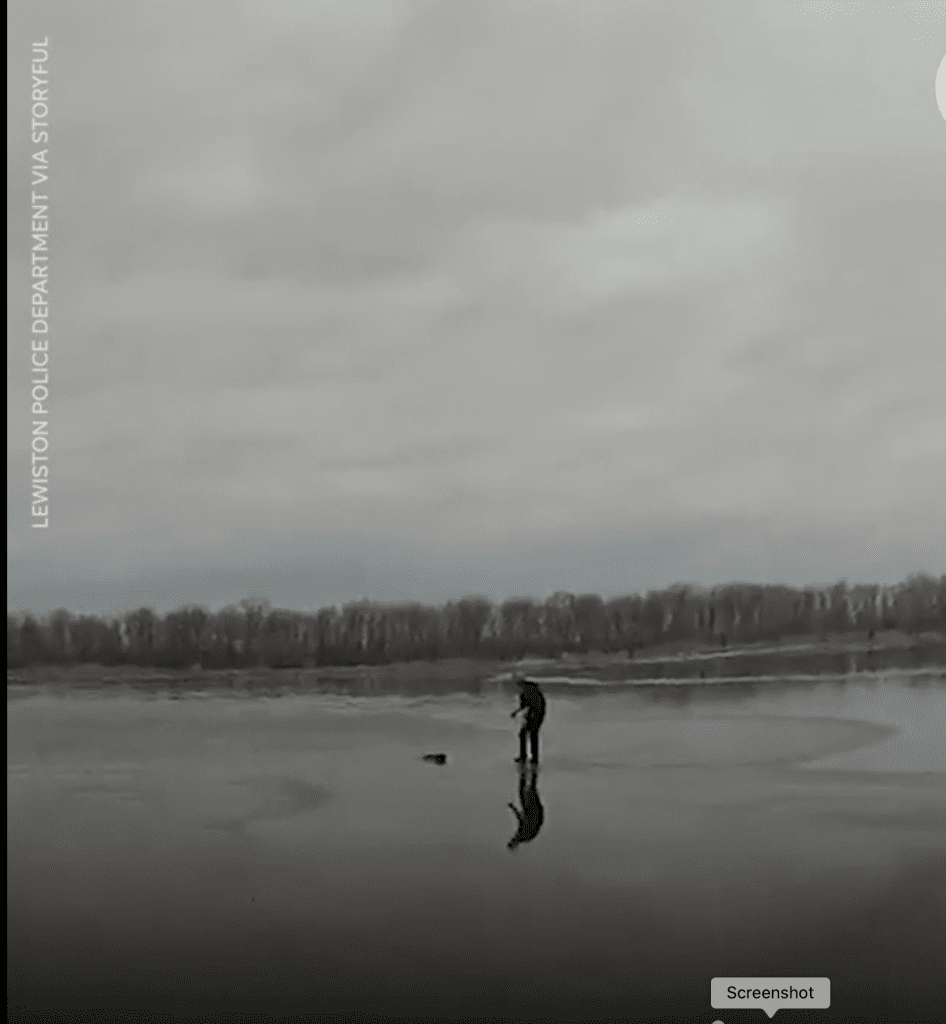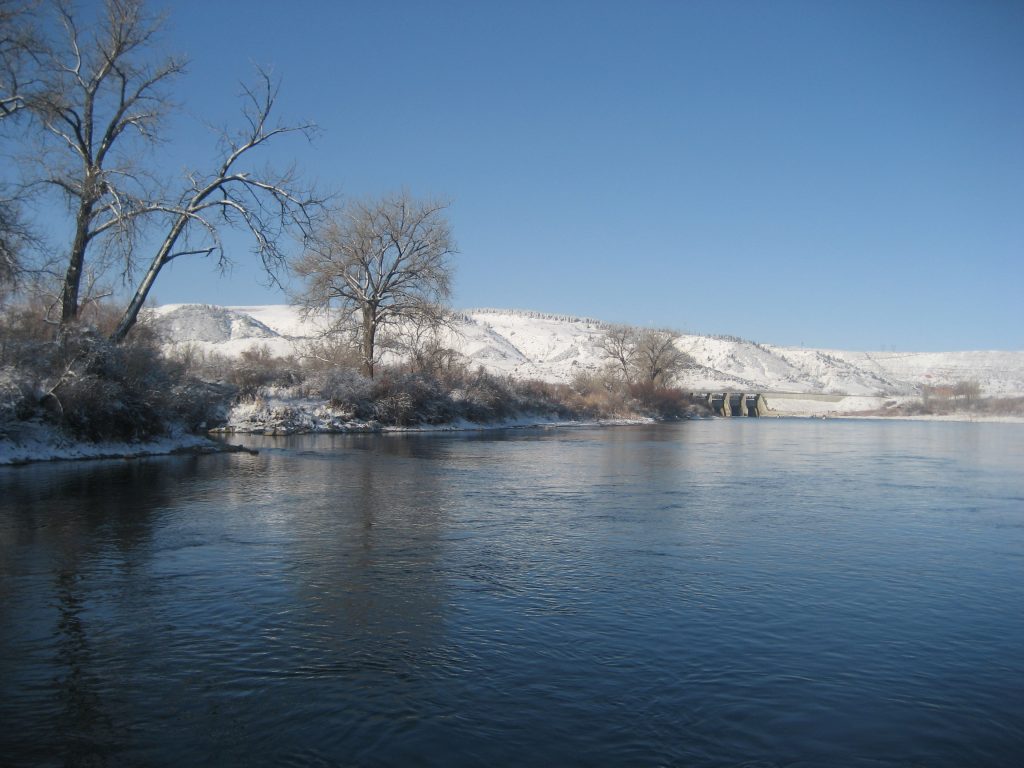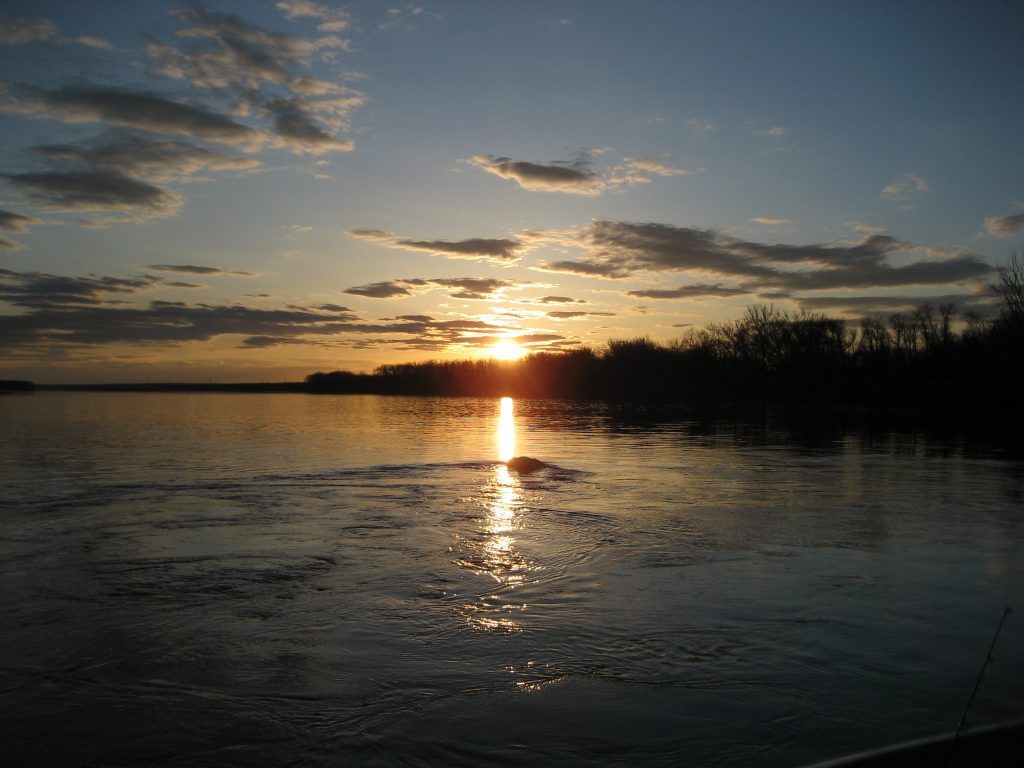

I was scrolling through the news the other day when I saw a story of a police officer barreling out on the ice to save a dog that was heavier than the ice could handle. The story falls under the feel good category, getting good tractions with all the animal lovers out there. As a fire/rescue/boy scout/physics enthusiast, I completely had a different take on this officer’s actions.

Before anybody gets triggered, I am not a cop hater… I am a firefighter, thus obligating me morally and ethically to pick on the folks who wear the blue… in a good way. As a physics enthusiast, I have to ask the question some of you have already asked. If the dog fell through the ice, how is the heavier officer supposed to stay dry? Finally, as an older-than-average boy scout, my brain kicked in with “What happened to ‘reach-throw-row-go?’” This simple, important mantra has a lot to unpack and saves a lot of lives each year. Many of these lives saved are that of the well-intentioned rescuers, like our dog-saving officer. A couple of years back, our area experienced this fact in a negative way. A young kid fell out of the boat, and his grandpa jumped in to save him. The grandpa drowned that day, and the kid made it.
So the basic principle of this water rescue mantra is to first “reach” with something to pull the person in trouble to safety. If you don’t have something long enough to reach the person in distress, then you “throw” them something that will help them float or that you can pull them to safety with. If the first two options aren’t fully successful or possible then you find a way to “row”; taking a boat for example. If none of these options are successful or not an option you “go” as a last resort.
When you look at it, “reach-throw-row-go” makes a lot of sense and seems pretty straight forward. Throw in a little human nature, however, and we love to do everything in reverse order. I can’t tell you how many times I have heard during an emergency situation, “YOU NEED TO DO SOMETHING” just louder… yes, my ears still hurt from a few of them. What we naturally forget when the bad thing happens is, the most important actions anyone can take is to first calm yourself while looking at the big picture. The lack of these two simultaneous actions get more people hurt and cause more damage than the initial bad thing by itself. The kid I talked about earlier had a life jacket on and was floating in the water as his grandpa drowned in front of him.

Paying attention to the big picture is also important before the bad thing happens for couple of reasons. First is avoiding the bad thing. Secondly, it helps you identify the bad thing sooner. This makes a positive outcome more probable.
When I was in high school, I was part of a water rescue that would have ended badly because of lack of situational understanding of the girlfriends of the two guys in trouble. Their girlfriends thought they were just screwing around out in the middle of the lake. The girls occasionally even waved back at the guys struggling in the water that were waving frantically for help. After we realized there was a need for a rescue, we canoed out to them and threw them each a life jacket and talked to them until they relaxed.
I’m going to be very general here, but the two most common reason rescuers have issues during a rescue is there lack of ability to overcome the elements or the person they are trying to save overwhelms them. When someone is drowning they will instinctively do everything possible to climb out of their situation, this includes on top of the rescuer. As for being overcome by the elements… I remember when I could float for an hour in cold water and easily swim a mile. Ya, that was more than a couple of years ago and doesn’t involve the stress of rescuing someone who will take you under without knowing they are.
This is why when the bad thing happens, it's essential to calm yourself and get a handle on all of your resources and the factors present. One example I witnessed is the guy who jumped in to save a buddy at a hotel pool in the deep end. Then another friend grabbed the pole on the wall and saved both of his friends. The “do something first” option always leads to a less favorable outcome than the “think, then act” approach.

After reading this far I have a question. Be honest with yourself as you think about the answer. Ready…here it is: How many times in this article did you think to yourself “that’s simple enough”? That’s common sense? The reason I ask, is that this is what we all think but almost never apply when the bad thing happens. Without changing our natural responses, we tend to come out of situations with “I should have” actions. It doesn’t matter if it’s in the pool, at the lake or even talking through it over coffee, practicing “reach-throw-row- go" helps us make wiser decisions when it matters and helps lead to better endings when the bad thing happens.
What you’ll find, as I did today on my way home from town, is that understanding this water rescue mantra helps in all emergency situations and in many aspects of life. I encountered a frantic young lady who went in the ditch and was randomly doing everything she thought she could do to get out. To safely help, I needed to consider the weather and road conditions, her state of mind and how the car was sitting in the ditch.
When it comes down to it, rescue is about process and wise decisions regardless of the where and when. It's about saving someone and not needing to get saved. So as the ice is melting this spring, as a family or with friends, take the time to learn “reach-throw-row-go” and make sure to practice this year. This way we can have a year with more positive outcomes on the water.
Geremy Olson grew up in the outdoors. After being burned as a volunteer firefighter, he had to figure out how to teach outdoor skills to his children from a wheelchair while learning to walk. Today he is an inspirational speaker, author, FCA Outdoors ND director, tournament director, video producer, wildfire consultant, and proud father of the owners of Missouri Secrets Tackle & Secrets to Fishing.
